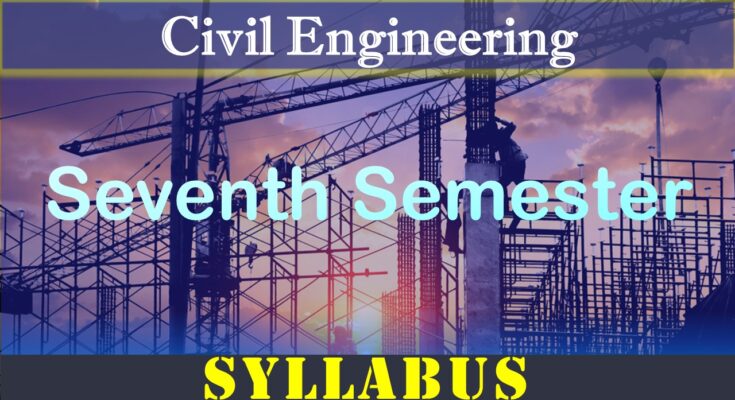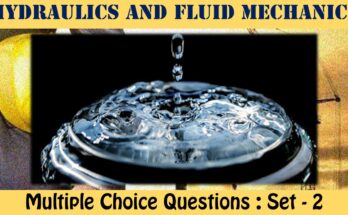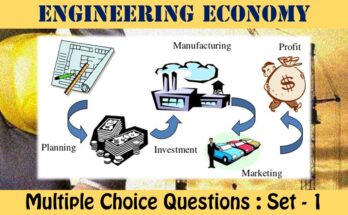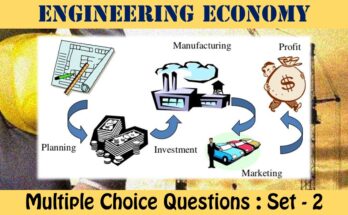Syllabus B Tech Civil Seventh Semester Cost-Effective And Eco-Friendly Construction CE7004
The concepts developed in this course will aid in quantification of several concepts in Civil Engineering that have been introduced at the Engineering courses. Technology is being increasingly based on the latest Syllabus B Tech Civil Seventh Semester Cost-Effective And Eco-Friendly Construction CE7004 is given here.
The objective of this course “Syllabus B Tech Civil Seventh Semester Cost-Effective And Eco-Friendly Construction CE7004“ is to develop ability and gain insight into the process of problem-solving, with emphasis on thermodynamics. Specially in following manner: Apply conservation principles (mass and energy) to evaluate the performance of simple engineering systems and cycles. Evaluate thermodynamic properties of simple homogeneous substances. Analyze processes and cycles using the second law of thermodynamics to determine maximum efficiency and performance. Discuss the physical relevance of the numerical values for the solutions to specific engineering problems and the physical relevance of the problems in general and Critically evaluate the validity of the numerical solutions for specific engineering problems. More precisely, the objectives are:
- To enable young technocrats to acquire mathematical knowledge to understand Laplace transformation, Inverse Laplace transformation and Fourier Transform which are used in various branches of engineering.
- To introduce effective mathematical tools for the Numerical Solutions algebraic and transcendental equations.
- To acquaint the student with mathematical tools available in Statistics needed in various field of science and engineering.
CE 7004 – Cost-Effective And Eco-Friendly Construction
Energy Efficient & Environment friendly building material products: Walls – Stabilized and sun dried, soil blocks & bricks, Solid & Hollow concrete blocks, stone masonry blocks, Ferro cement partitions.
Roofs – Pre-cast R.C. Plank & Joists roof, Pre-cast channel roof, Pre-cast L-panel roof, Pre-cast Funicular shells, Ferro cement shells, Filler Slab, SeasalFibre roof, Improved country tiles, Thatch roof, M.C.R. tile.
Green Materials, Green Buildings – Definition – Features- Necessity – Environmental benefit – Economical benefits – Health and Social benefits – Major Energy efficient areas for buildings – Embodied Energy in Materials.
(a)Techniques: Rat trap bond construction, Energy Efficient roofings, Ferro cement technique, Mud Technology.
(b) Equipments: Brick moulding machine, Stabilized soil block making machine and plants for the manufacturing of concrete blocks, M.C.R. tile making machine, Ferro cement wall panel & Roofing channel making machine, R.C.C. Chaukhat making m/c.
(a)Waste water disposal system
(b)Cost effective sanitation for rural and urban areas
(c)Ferrocement Drains.
(a)All experimental materials
(b)All experimental techniques
Green Building rating systems.
Books Recommended
1. Alternative Building Materials and Technologies – K S Jagadeesh, B V Venkatta Rama Reddy & K S NanjundaRao – New Age International Publishers
2. Integrated Life Cycle Design of Structures – AskoSarja –CRC Press
3. Non-conventional Energy Resources –D S Chauhan and S K Sreevasthava – New Age International Publishers
4. Buildings How to Reduce Cost – Laurie Backer – Cost Ford
5. Lynne Elizabeth, Cassandra Adams Alternative Construction : Contemporary Natural BuildingMethods ”, Softcover, Wiley & Sons Australia, Limited, John,2005
6. Givoni, “Man, Climate, Architecture, Van Nostrand, New York, 1976.
7. Charles J. Kibert, Sustainable Construction: Green Building Design and Delivery,John Wiley & Sons,2005.
8. Eugene Eccli- Low Cost, Energy efficient shelter for owner & builder, Rodale Press, 1976.




